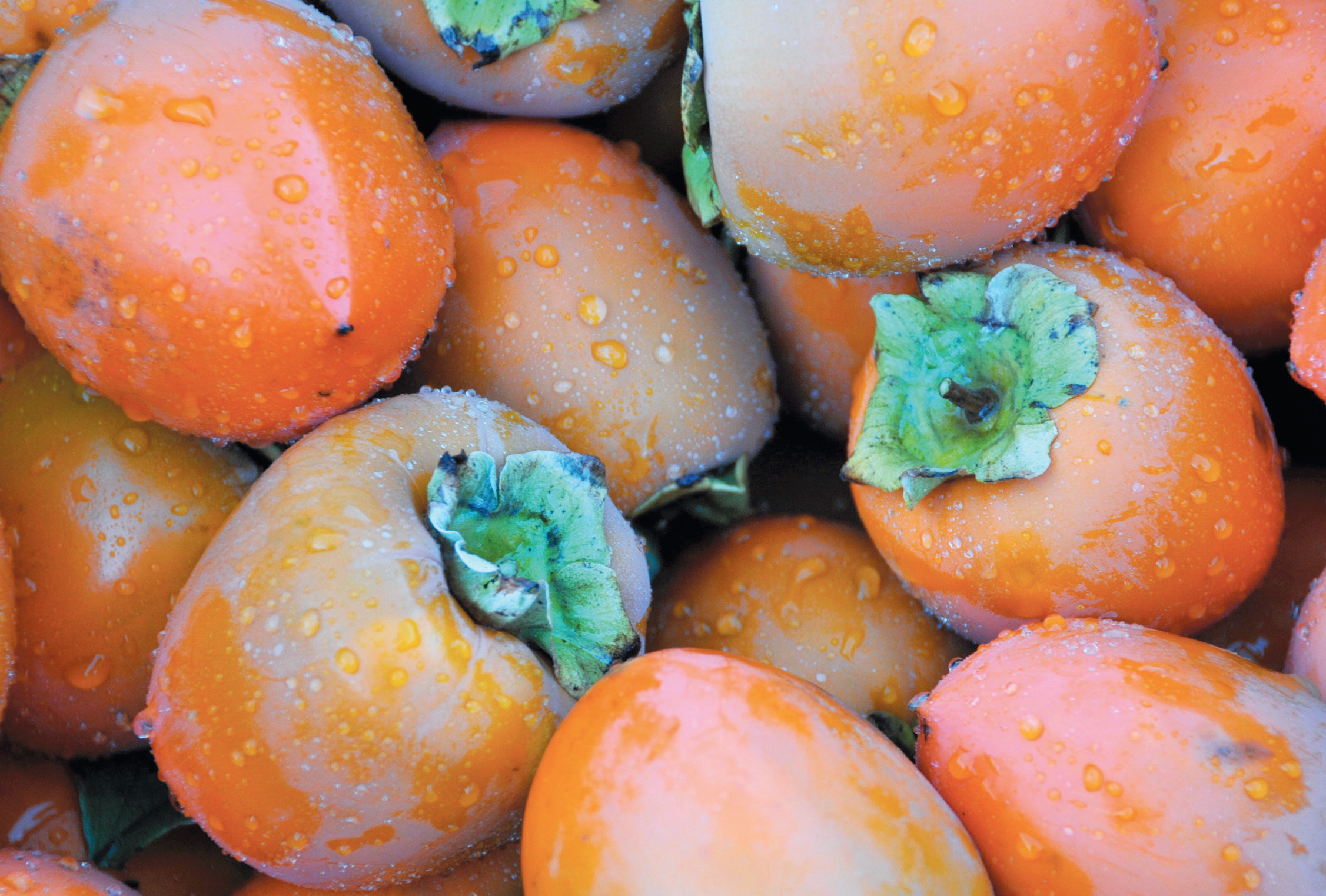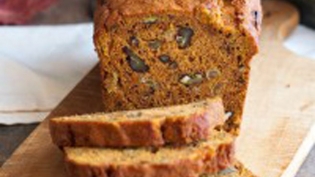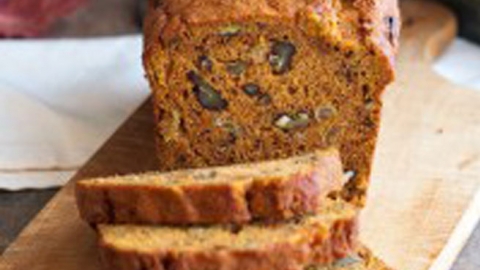In the Garden with Persimmons
I am not sure how I became such a big fan of persimmons. They kind of crept up on me. Persimmons used to be just a Thanksgiving and Christmas family treat, mixed in the fruit basket along with pears, pomegranates, big navel oranges and grapes that were enjoyed after dinner.
My siblings were (and still are) fussy eaters, and did not like their soft texture. My mom and I loved the sweet taste and we were attracted by the beautiful pumpkin-orange color. We used to cut the persimmons into soft chunks if they were firm enough or we'd scrape the more ripened fruit into a custard dish to be eaten with a spoon.
After college, when I was at an Army post in Missouri, I saw smaller native American persimmons growing wild "in the field." Locals showed me how to pick and eat them after the first snowfall when they were sometimes semi-frozen. These "Ozark plums" were to me like nature's popsicles and as I munched them they reminded me of holidays at home.
There is not much of a national market for the native American persimmon strains. Nearly all of the fruit you find at the grocery store today hails from cultivars of the Far East, probably originating in China, though much of them are raised in California. There is, how ever, an interesting local link. It is reported that Rhode Island's Commodore Matthew Perry sent the first persimmon seeds back to the United States in 1856 after he had "opened" Japan for trade.
Persimmons come in many varieties and the two main divisions are so dramatically different from one another that it almost seems that they should be classified as totally different fruits. The most popular variety in the U.S. today is Hachiya, which is the size of a tennis ball but oblong in shape. Hachiya represents the astringent kind of persimmons – the type you really do not want to eat before they are perfectly ripe. This can be both an advantage and disadvantage, as I'll mention later, but suffice it to say it is a trait that has probably prevented persimmons from becoming popular in the mainstream.
Hachiya and its cousins must be eaten when they are so soft that unknowledgeable consumers may think that they are too soft, bordering on spoiling. The so-called nonastringent varieties are represented by Fuyu, which are smaller, rounder and may be eaten either firm or soft. When firm you may eat them like apples or cut thin wedges to add color, taste and texture to a salad. (The flavor differs when hard or soft, as it can with mangoes.) In general I have not found a Fuyu that is as sweet as any Hachiya, though both have their devotees.
Technically persimmons are of the genus Diospyros, derived from the Greek words "Dios" and "pyros" which somehow conspire to give the meaning "food of the gods," though that's not the exact translation. Nevertheless, a ripe persimmon would be extremely satisfying to any inhabitant of Olympus. They are a little pricy at about $2 each, which is not a problem if you only eat them occasionally. But if you are the kind of person who could possibly eat close to 100 of these things in season (and I know for a fact that such people exist) then you should plant a tree.
My acquisition of a persimmon tree began this way: A garden catalog arrived in the mail one day from a company called Edible Landscaping and it showed a great many varieties that purportedly could be grown in New England. By chance this nursery was located not far from the university in Virginia attended by my daughter – naturally, I conscripted a visit during the next parents' weekend.
There I saw persimmon trees like those you see in fruit tree catalogs and swear are fake. On the spot I ordered a Saijo variety, which in Japanese means "the very best one" and is of the Hachiya type. The rest is history.
In three years the little whip bore fruit and each year thereafter the harvest has grown to the point where I am the king of persimmons, at least in Wickford, Rhode Island. I can't eat them all. I give away baskets of the things, attempt to force-feed any stray visitors when it is picking season. I dry them. I use the soft jelly-like center directly as a spread on toast. My wife, Abby, has used the same as a cake layer. Creative as I have become in distributing persimmons, I had enough left over for a friend to make a small quantity of persimmon wine. Unless something unexpected happens I may have to open a fruit stand this year because the gods would be very disappointed in me if I let any of these delicious fruits go to waste.
Frankly, I did not expect success. I figured people waste $20 on a lot less than a persimmon tree and in my case it was a gamble that paid off. I investigated other varieties and found that persimmons can be grown in lots of places and are tolerant of a wide variety of growing conditions. It was claimed that some trees even survived prolonged temperatures of minus 10° in their native China or Korea and have borne fruit. Of course I was skeptical because persimmon fruit looks tropical but the fact is that it is not. I can only say that my tree is doing nicely in a less-than-ideal spot in my yard (because there was no other spot left) where it has been exposed to the harsh winter winds off Wickford Harbor.
As mentioned, the astringent varieties must be ripe before eating or you may never eat one again. My Saijo crop has stray ripe fruit in the middle of October. The literature mentions that though persimmons will ripen in due course wherever they are grown, they seem to ripen faster after a light frost that may even bring out a sweeter taste. The benefit of astringency is that nothing eats the unripe fruit – not beetles, not birds, not worms and not even those Wickford squirrels who have lately been straying from their acorn diet. Astringency means no pesticides are needed during the growing season. Consequently these fruits can be more easily grown to organic standards, which many consumers prefer and which command a higher price for the grower.
One of my tricks is to pick a fairly large quantity before the first frost, when the fruit skin is a firm dull orange, instead of the bright orange it becomes when ripe and soft. I save some to ripen after I have eaten or given away the tree-ripened fruit. You've heard the saying that one bad apple spoils the bunch. Well, that's how it's done. I put the firm persimmons in a paper bag with a very ripe apple or banana. The ethylene gas causes the other fruit to ripen faster.
All strains of persimmons are high in vitamins A and C and contain generous amounts of fiber and potassium as well. I've heard it said that persimmons, particularly their Israeli cultivar called Sharon Fruit, prevent heart attacks. Given my somewhat dubious genetic cardiac inheritance and the fact that I truly am the man in Rhode Island who eats the most persimmons any way you tally it up, I may be a walking research trial. I just hope they're right.







